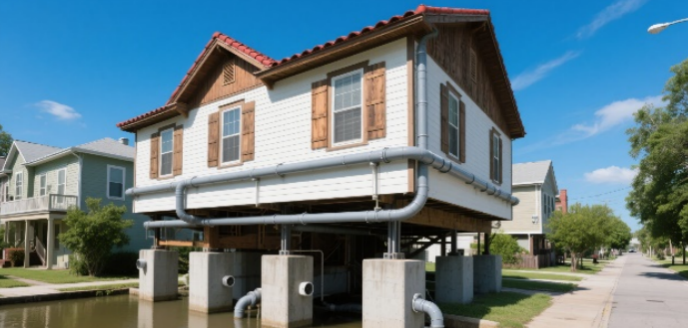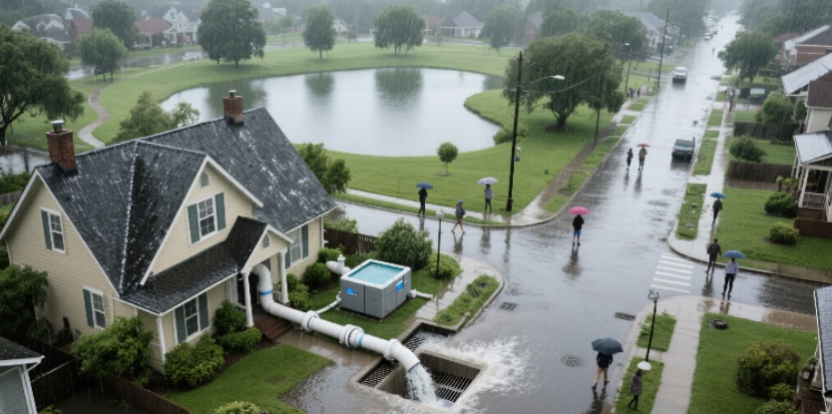
In an era defined by intensifying climate challenges, coastal communities like New Orleans are confronting a stark reality: flooding is no longer an occasional threat but a recurring peril. Responding to this urgency, local engineers have pioneered Flood-Resistant Design 2.0—a revolutionary approach blending advanced 3D modeling, structural innovation, and smart technology to transform homes into resilient fortresses. At its core lie two game-changing components: elevated foundations and intelligent drainage systems, which together deliver not just safety but substantial long-term savings—including a remarkable 60% reduction in flood insurance premiums for upgraded properties.
The Technical Edge of Elevated Foundations
Gone are the days of generic flood defenses. Using precision 3D modeling software, engineers now create hyper-specific digital twins of each home, simulating flood scenarios with unprecedented accuracy. This allows them to calculate the exact elevation required to keep foundations above the 100-year floodplain—a critical metric made more dynamic by evolving climate projections. By elevating structures on reinforced piers or concrete slabs, homes gain a protective buffer against rising waters, reducing the risk of structural damage, mold proliferation, and costly repairs.
But this isn’t just about height. Modern elevated designs prioritize aesthetic integration, ensuring raised homes maintain architectural harmony with neighborhood landscapes. Steel beams and composite materials, chosen for durability and corrosion resistance, support living spaces while allowing water to flow beneath during storms—minimizing hydrodynamic pressure that could destabilize traditional foundations.

Smart Drainage: The Brain Behind the Brawn
Complementing these structural upgrades is the intelligent drainage system—a network of sensors, adaptive valves, and permeable infrastructure that acts as a home’s first line of defense against surface water. Real-time moisture sensors embedded in yards and basements detect rising water levels, triggering automated pumps that redirect runoff to retention basins or municipal drainage systems. Permeable pavement and green roofs enhance this system by absorbing rainwater, reducing strain on city sewer networks during deluges.
The genius lies in its adaptability: algorithms analyze local weather forecasts and historical flood data to pre-adjust drainage parameters, ensuring optimal performance even during surprise storms. This proactive approach doesn’t just protect homes; it future-proofs them against the unpredictable hydrology of a warming planet.
The Financial Case: Savings That Stack Up
While the upfront investment in these upgrades may give some pause, the long-term economics are compelling. Homeowners who’ve retrofitted with Flood-Resistant Design 2.0 report an average 60% drop in flood insurance costs—a direct result of reduced risk profiles recognized by insurers. This isn’t short-term relief: as flood zones become more expensive to insure (or uninsurable altogether in high-risk areas), these homes retain market value and insurability, offering a hedge against depreciating property values.
Government incentives sweeten the deal: programs like FEMA’s Building Resilient Infrastructure and Communities (BRIC) grant funding for eligible retrofits, further lowering upfront costs. When paired with reduced repair bills and minimized downtime after storms, the return on investment becomes undeniable—especially for millennials and Gen Z homeowners prioritizing both sustainability and financial prudence.
Empowerment Through Data: The FEMA Flood Map Tool
Staying ahead of flood risks requires knowledge, and the FEMA Flood Map Service Center provides just that. This interactive tool offers dynamic, user-friendly maps that update in real-time with the latest floodplain data, including projections for sea-level rise and extreme weather events. Homeowners can input their address to view:
Current flood zone designations (e.g., V-zones for coastal flooding, AE-zones for riverine risk)
Historical flood patterns and future risk scenarios
Recommended mitigation strategies tailored to their property’s vulnerability
Armed with this information, residents can make informed decisions about upgrades, ensuring their investments align with actual risk levels. It’s a pivotal resource in a world where static flood maps no longer suffice—putting the power of prediction directly into homeowners’ hands.

A Model for a Wetter World
New Orleans’ innovation isn’t just local; it’s a blueprint for flood-prone regions worldwide. By merging engineering precision with digital intelligence, Flood-Resistant Design 2.0 proves that resilience doesn’t require sacrificing comfort or budget. It’s a testament to human ingenuity—showing how technology can turn vulnerability into strength, and how proactive solutions today can safeguard both homes and finances for decades to come.
For anyone living in a flood zone, the message is clear: adaptation isn’t optional—it’s smart. And with tools like 3D modeling and FEMA’s dynamic maps, the path to a flood-resistant future is more accessible than ever.





